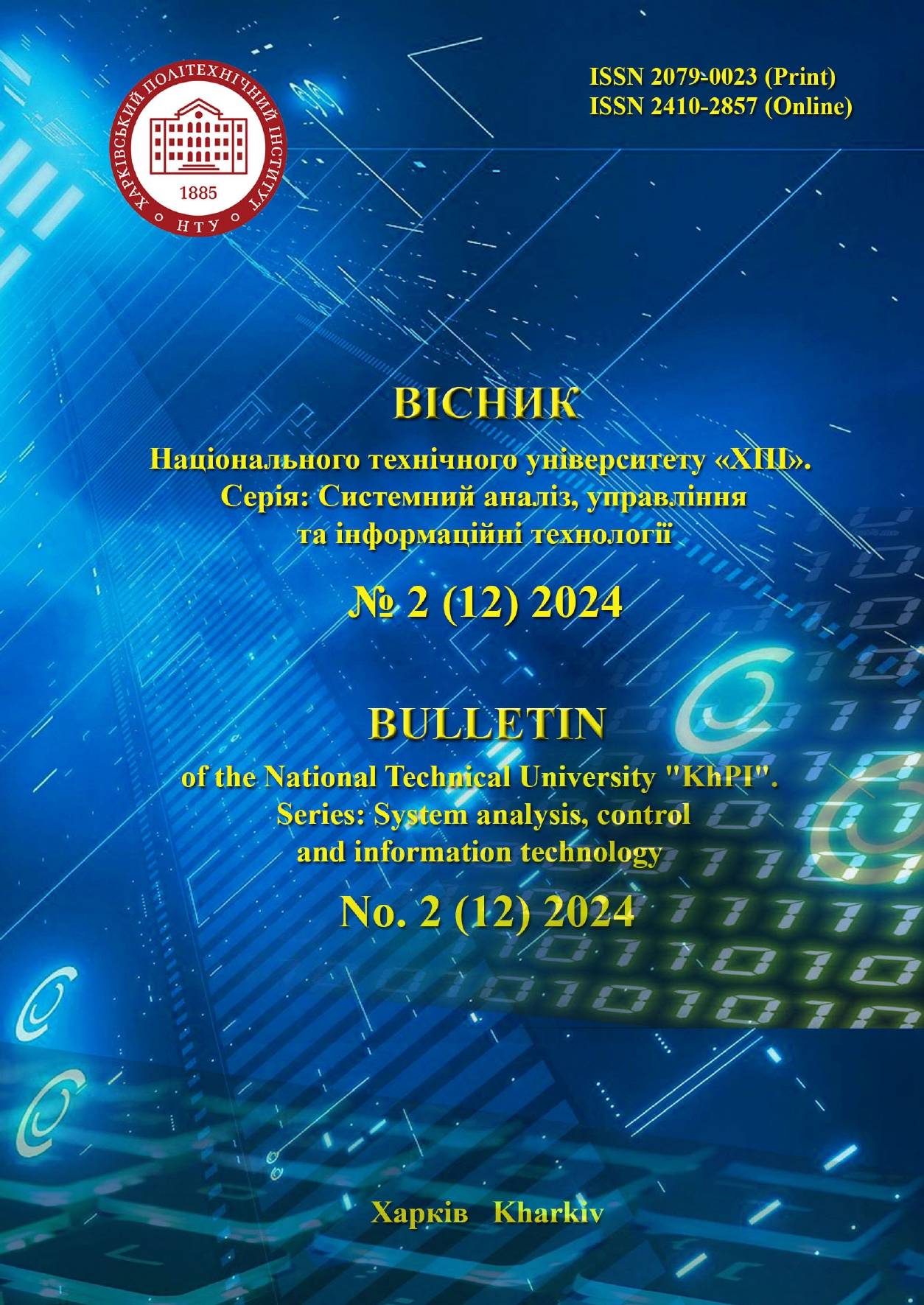INTELLIGENT INFORMATION TECHNOLOGY FOR RAPID CLASSIFICATION UNDER CONDITIONS OF OVERLAPPING CLASSES
DOI:
https://doi.org/10.20998/2079-0023.2024.02.17Keywords:
rapid classification, overlapping classes, online mode, nearline mode, neural network, neuro-fuzzy system, neo-fuzzy system, adaptive learning, fuzzy logicAbstract
The subject of this research is the process of rapid data classification under conditions of overlapping classes. Rapid classification is performed in real-time or near-real-time mode. The aim of the work is to develop an intelligent information technology for rapid classification in online and nearline modes under conditions of overlapping classes. Achieving this goal allows for the consideration of non-stationarity in input data and class imbalance under conditions of streaming data. The tasks of compensating for noise in input data and changes in input data distribution due to non-stationarity, as well as the task of compensating for class imbalance, are interconnected when classifying under conditions of overlapping classes and require the development of a comprehensive solution. To achieve the goal, the following tasks are addressed: structuring approaches to classification of overlapping classes considering non-stationarity in input data and class imbalance; developing an intelligent technology for classification in online and nearline modes. An intelligent information technology for rapid classification under conditions of overlapping classes is proposed. The technology includes stages of preliminary classification considering noise in input data, classification considering class imbalance, and classification considering changes in input data patterns. The technology involves sequential use of a neo-fuzzy system, an adaptive neuro-fuzzy system, and a multilayer neural network with kernel bell-shaped activation functions. The neo-fuzzy system uses neo-fuzzy neurons, ensuring resistance to noise. The adaptive neuro-fuzzy system considers distances between input data and class centers in feature space, ensuring classification under class imbalance conditions. The multilayer neural network with kernel bell-shaped activation functions uses a recurrent learning algorithm, ensuring adaptation to new data with a new distribution. The technology enables rapid iterative refinement of classification decisions according to changes in input data characteristics.
References
Engelbrecht Andries P. Computational Intelligence: An Introduction. NJ: John Wiley & Sons, 2007. 632 р.
Howard A.G., Zhu M., Chen B., Kalenichenko D., Wang W., Weyand T., Adam H. Mobilenets: Efficient convolutional neural networks for mobile vision applications. Available at: https://arxiv.org/abs/1704.04861 (accessed 14.10.2024).
Xiong H., Wu J., Liu L. Classification with class-overlapping: A systematic study and a new measure of class separability. IEEE Transactions on Systems, Man, and Cybernetics – Part A: Systems and Humans. 2010, vol. 40(4), pp. 973–985.
Vuttipittayamongkol P., Zhang X., Yang H. Overlap-based undersampling for improving classification performance on imbalanced data with overlapping classes. Knowledge-Based Systems. 2020.
Krawczyk B., Minku L.L., Gama J., Stefanowski J., Woźniak M. Ensemble learning for data stream analysis: A survey. Information Fusion. 2017, vol. 37, pp. 132–156.
Bifet A., Holmes G., Kirkby R., Pfahringer B. MOA: Massive Online Analysis. Journal of Machine Learning Research. 2010, vol. 11, pp. 1601–1604.
Bodyanskiy Y., Pliss I., Vynokurova O. An adaptive learning algorithm for evolving neuro-fuzzy systems in the online mode. Information Sciences. 2015, vol. 294, pp. 189–204.
Bodyanskiy Y., Pliss I., Chala O., Deineko A. Evolving fuzzy-probabilistic neural network and its online learning. In 10th International Conference on Advanced Computer Information Technologies. Deggendorf, Germany. 2016. Available at: https://doi.org/10.1109/ACIT49673.2020.9208904 (accessed 14.10.2024).
Wang S., Minku L.L., Yao X. Dealing with Multiple Classes in Online Class Imbalance Learning. Proceedings of the Twenty-Fifth International Joint Conference on Artificial Intelligence. 2016, pp. 1–7.
Batista G.E.A.P.A., Prati R.C., Monard M.C. A Study of the Behavior of Several Methods for Balancing Machine Learning Training Data. SIGKDD Explorations Newsletter. 2004, vol. 6(1), pp. 20–29.
Bodyanskiy Y., Chala O.V. et al. Evolving Stacking Neuro-Fuzzy Probabilistic Networks and Their Combined Learning in Online Pattern Recognition Tasks. Artificial Intelligence in Control and Decision-making Systems. 2023, pp. 95–123.
Bodyanskiy Y., Deineko A., Pliss I., Chala O. Fast probabilistic neuro-fuzzy system for pattern classification task. Information Technology and Management Science. 2020, vol. 23, pp. 12–16.
Bodyanskiy Y., Chala O. Enhanced multidimensional neo-fuzzy classification system аnd its learning for the video classification task. Management Information System and Devices. 2024, vol. 181, pp. 42–50. Available at: https://www.ewdtest.com/asu/wp-content/uploads/2024/09/ASUtaPA_181_42_50.pdf (accessed 14.10.2024).
Wang Y., Jodoin P.-M., Porikli F., Konrad J., Benezeth Y., Ishwar P. CDnet 2014: An expanded change detection benchmark dataset. In Proceedings of the IEEE Workshop on Change Detection (CDW-2014) at CVPR-2014. 2014, pp. 387–394. Available at: http://jacarini.dinf.usherbrooke.ca/dataset2014 (accessed 14.10.2024).
Downloads
Published
How to Cite
Issue
Section
License

This work is licensed under a Creative Commons Attribution 4.0 International License.
Authors who publish with this journal agree to the following terms:
- Authors retain copyright and grant the journal right of first publication with the work simultaneously licensed under a Creative Commons Attribution License that allows others to share the work with an acknowledgement of the work's authorship and initial publication in this journal.
- Authors are able to enter into separate, additional contractual arrangements for the non-exclusive distribution of the journal's published version of the work (e.g., post it to an institutional repository or publish it in a book), with an acknowledgement of its initial publication in this journal.
- Authors are permitted and encouraged to post their work online (e.g., in institutional repositories or on their website) prior to and during the submission process, as it can lead to productive exchanges, as well as earlier and greater citation of published work (See The Effect of Open Access).


